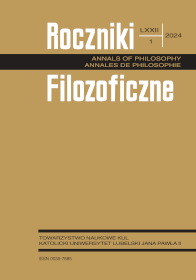Putnam’s Natural Realism and Its Problems
Putnam’s Natural Realism and Its Problems
Author(s): Tadeusz Szubka Subject(s): Philosophy, Epistemology
Published by: Towarzystwo Naukowe KUL & Katolicki Uniwersytet Lubelski Jana Pawła II
Keywords: Hilary Putnam; Michael Dummett; metaphysical realism; antirealism; natural or commonsense realism; naïve direct realism; disjunctivism; philosophical quietism; truth
Summary/Abstract: Hilary Putnam (1926–2016) was prone to change his mind on variety of philosophical issues and almost constantly to modify his views. The last period of the development of his philosophy is known as the phase of commonsense or natural realism, eloquently presented in his 1994 Dewey Lectures. This paper is focused on three facets of his position and tries to identify three difficulties it encounters. Firstly, Putnam claims that in the contemporary realism debate we have, on the one hand, proponents of extravagant metaphysical realism, and, on the other hand, advocates of various versions of irresponsible antirealism. Unfortunately, the delineation of the debate is too coarse-grained, since there are many forms of metaphysical realism, and lumping together various antirealisms is confusing and unhelpful. Secondly, Putnam’s naïve direct realism in the philosophy of perception seems incompatible with his transactional account of perception. Thirdly, for some time Putnam was under a spell of Wittgensteinian quietism that distorted the true character of his philosophical ideas.
Journal: Roczniki Filozoficzne
- Issue Year: 72/2024
- Issue No: 1
- Page Range: 43-60
- Page Count: 18
- Language: English

